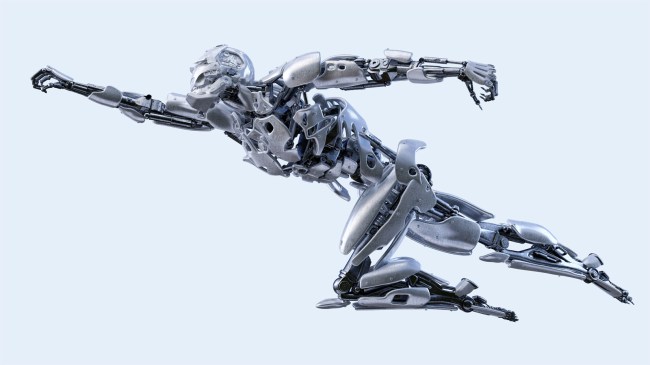iStockphoto

Audio By Carbonatix
Once again, rather than asking if they should do something, scientists went ahead and did it anyway. Now they have created the first successful flying humanoid robot that has thrusters built into its arms and a jet-pack mounted on its back.
Introducing, the iRonCub, a small humanoid robot designed by researchers at the Italian Institute of Technology (IIT). The iRonCub is about three-feet tall, weighs around 49 pounds, with a not-at-all terrifying expressionless baby-like head that looks like it came straight out of a horror movie.
According to IIT, “Research on humanoids usually focuses on manipulation and bipedal terrestrial locomotion. However, we believe that these robots could also benefit from aerial locomotion skills for specific applications such as disaster response, which is still an unexplored research direction for humanoids.”
So someday we will see a fleet of robots like this flying to disaster scenes like Ultron? What could possibly go wrong?
They also claim that these flying humanoid robots could potentially be used to make repairs on difficult-to-reach or complex structures and in environments such as nuclear facilities or chemical plants which could hazardous to humans. They also believe these robots, mimicking human motion, could potentially be used for virtual interaction, inspection, or even remote training scenarios in complex 3D environments.
The iRonCub MK3 with jet engines weighs around 154 pounds can provide a maximum thrust force of more than 1000 Newtons, and the exhaust temperature reaches 600 degrees. That sort of heat generation will certainly come in handy when the robot uprising inevitably begins.
“This system is designed to allow a robot to emulate a number of human capabilities as it’s being remotely controlled by an operator wearing a virtual reality (VR) helmet-like heads-up display (HUD) and other specialized equipment,” Live Science tech journalist Alan Bradley explains.
In their research paper, published on the pre-print server arXiv, the ITT scientists wrote that by demonstrating “a controlled liftoff from the ground” they have made “an important step towards full autonomous flight.”
Yay… progress?!
Content shared from brobible.com.

